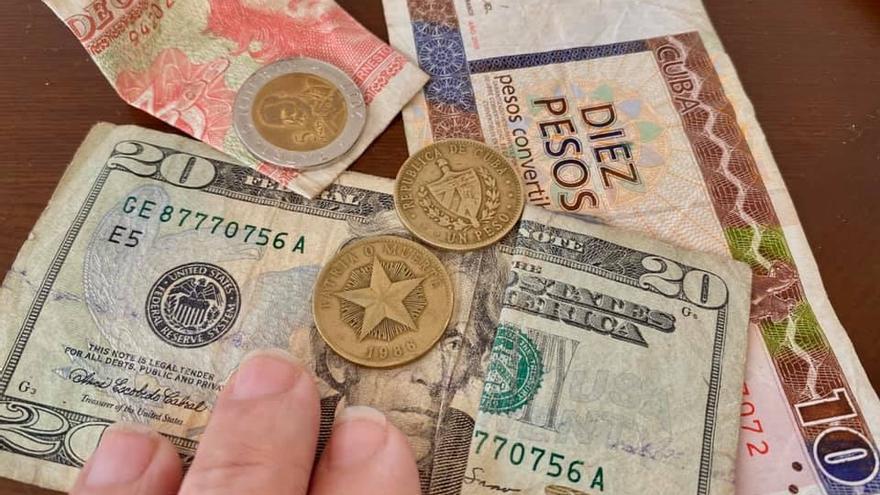
![]() 14ymedio, Havana, 16 August 2022 — The price of the dollar continues to rise in Cuba’s informal market after the entry into force of the new foreign exchange rates decreed by the Government two weeks ago. There is no change in this trend after Monday’s announcement on State TV’s Roundtable show, of an alleged opening to foreign investment in trade under the control of the State.
14ymedio, Havana, 16 August 2022 — The price of the dollar continues to rise in Cuba’s informal market after the entry into force of the new foreign exchange rates decreed by the Government two weeks ago. There is no change in this trend after Monday’s announcement on State TV’s Roundtable show, of an alleged opening to foreign investment in trade under the control of the State.
Up to 130 pesos is paid per dollar outside the official banks, according to the independent media outlet El Toque in its daily chart. The euro has the same value in the informal market, and the freely convertible currency (MLC) reaches 134.5 pesos.
On August 3, the Government, desperate and in the midst of the worst economic crisis in the country’s history, announced the purchase of cash dollars at 120 pesos instead of 24, and as of August 9, Cubans can already withdraw national currency at ATMs with this exchange rate. Since Tuesday, one can also transfer funds through magnetic cards in MLC to accounts in pesos with the new exchange rate.
However, the rise in foreign exchange is dragging with it the prices of many products that are sold in the private market and also in the informal market in Cuban pesos (CUP).
“The bag of bread that I bought at 70 pesos last week already on Saturday cost me 90,” laments a neighbor of Los Sitios, in Central Havana. “The saleswoman says that they have to buy the euro to deposit it and then buy the flour in MLC, so now it costs them more.”
Goods such as soft drinks, juices and beer, which can only be purchased at the MLC rate to supply private businesses, are also increasing in price in private restaurants and cafes. The 12-oz. can of imported beer that was bought a couple of weeks ago at 200 pesos, is now around 250. Also the main dishes based on chicken, fish or seafood have increased their prices in the paladares, “private” restaurants.
For its part, the real estate market is increasingly expressing its prices in foreign currency, in the face of the instability of the peso. On classified sites, ads for homes for sale most often carry the amount in dollars, with the warning “to be paid in the United States.” Others clarify that “if you don’t have euros in hand, don’t even call.”
The best offer in the informal foreign exchange market contributes to further lowering the little enthusiasm that customers had to sell euros and dollars in bank branches. On Monday, an employee of the Metropolitan Bank located on the ground floor of the Ministry of Transport in Havana asked, on several occasions, while organizing the line in front of the office, “Is anyone here to sell foreign currency?” No one answered.
A few meters from that branch, a private cafeteria offered a more favorable exchange rate. “We accept payment in dollars, one at 130,’’ explained a young man to a couple of customers who wanted to pay with a ten-dollar bill. “We will give the change in pesos, of course,” the employee said. “Much better than at the Bank, where they are still asleep and haven’t raised the price.”
Translated by Regina Anavy
____________
COLLABORATE WITH OUR WORK: The 14ymedio team is committed to practicing serious journalism that reflects Cuba’s reality in all its depth. Thank you for joining us on this long journey. We invite you to continue supporting us by becoming a member of 14ymedio now. Together we can continue transforming journalism in Cuba.
